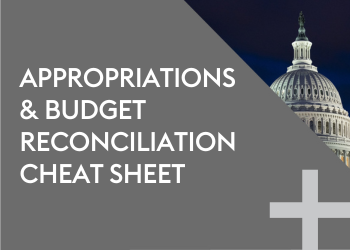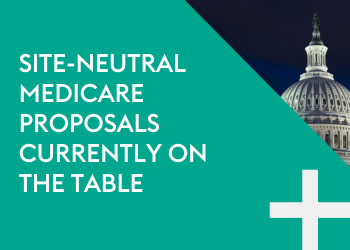
7/7
Policy changes under the Trump administration could reshape value-based care models, payment structures, and participation requirements. Our latest +Insight explores the current landscape and potential changes, highlighting opportunities and challenges.

1/7
The Centers for Medicare & Medicaid Services (CMS) recently finalized the 2026 Medicare Advantage (MA) and Part D Payment Rates and Policies, including a net 5.06% increase in payments to MA plans before accounting for coding trends. The overall increase reflects an average county benchmark growth rate of 9.04% along with continued phase-in of changes to the MA risk model and rebasing of county benchmark amounts. The updates and changes to payment policies are important for plans in preparing offerings and bids for 2026, as well as providers and others who do business with MA plans or are thinking about engaging with MA.

2/7
On April 11, 2025, the Centers for Medicare & Medicaid Services (CMS) issued the fiscal year (FY) 2026 Inpatient Prospective Payment System (IPPS) proposed rule. The rule would update Medicare payment policies and quality reporting programs relevant for inpatient hospital services.

3/7
The Centers for Medicare & Medicaid Services (CMS) is expected to finalize payment rates and policies for the 2026 Medicare Advantage (MA) and Part D programs in early April 2025. The January 2025 advance notice proposed a 2.23% average payment increase for MA plans, expected to rise to 4.33% with coding adjustments. Key determining factors of the final rate notice include the final growth rate, the ongoing phase-in of a new risk model, the normalization factor, and more. This +Insight delves into the details of these factors and their implications for the 2026 payment year.

4/7
Read on as we explore the different pathways for NTAP eligibility, the associated criteria for each pathway, and the timeline and key dates to consider before applying.

5/7
Congress is simultaneously pursuing two major initiatives involving government spending: funding/appropriations and budget reconciliation.
Download our cheat sheet that describes both initiatives and includes a comparison table to help you understand and follow these bills as Congress continues its work.

6/7
In this +Insight, we review and categorize recent Medicare site-neutral policy proposals and suggest considerations to guide analysis of these policies’ potential impact.

7/7
Policy changes under the Trump administration could reshape value-based care models, payment structures, and participation requirements. Our latest +Insight explores the current landscape and potential changes, highlighting opportunities and challenges.

1/7
The Centers for Medicare & Medicaid Services (CMS) recently finalized the 2026 Medicare Advantage (MA) and Part D Payment Rates and Policies, including a net 5.06% increase in payments to MA plans before accounting for coding trends. The overall increase reflects an average county benchmark growth rate of 9.04% along with continued phase-in of changes to the MA risk model and rebasing of county benchmark amounts. The updates and changes to payment policies are important for plans in preparing offerings and bids for 2026, as well as providers and others who do business with MA plans or are thinking about engaging with MA.

2/7
On April 11, 2025, the Centers for Medicare & Medicaid Services (CMS) issued the fiscal year (FY) 2026 Inpatient Prospective Payment System (IPPS) proposed rule. The rule would update Medicare payment policies and quality reporting programs relevant for inpatient hospital services.

3/7
The Centers for Medicare & Medicaid Services (CMS) is expected to finalize payment rates and policies for the 2026 Medicare Advantage (MA) and Part D programs in early April 2025. The January 2025 advance notice proposed a 2.23% average payment increase for MA plans, expected to rise to 4.33% with coding adjustments. Key determining factors of the final rate notice include the final growth rate, the ongoing phase-in of a new risk model, the normalization factor, and more. This +Insight delves into the details of these factors and their implications for the 2026 payment year.

4/7
Read on as we explore the different pathways for NTAP eligibility, the associated criteria for each pathway, and the timeline and key dates to consider before applying.

5/7
Congress is simultaneously pursuing two major initiatives involving government spending: funding/appropriations and budget reconciliation.
Download our cheat sheet that describes both initiatives and includes a comparison table to help you understand and follow these bills as Congress continues its work.

6/7
In this +Insight, we review and categorize recent Medicare site-neutral policy proposals and suggest considerations to guide analysis of these policies’ potential impact.

7/7
Policy changes under the Trump administration could reshape value-based care models, payment structures, and participation requirements. Our latest +Insight explores the current landscape and potential changes, highlighting opportunities and challenges.
